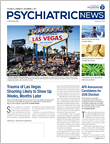Insomnia that starts in childhood and persists into adolescence may boost the risk of psychiatric disorders in adolescence, according to researchers at the Penn State University College of Medicine.
This finding points to the value of early treatment of insomnia, said Sara Frye, Ph.D., a clinical psychology intern in Penn State’s Sleep Research and Treatment Center, who described her research at the joint annual meeting of the American Academy of Sleep Medicine and Sleep Research Society, held in Boston in June.
Frye and colleagues analyzed data from the Penn State Child Cohort, a funded longitudinal study of 700 children aged 5 to 12 years funded by the National Institutes of Health. As part of this study, the children underwent a physical examination and overnight sleep evaluation and answered questions about whether they had trouble falling asleep and/or staying asleep, or if they had ever experienced psychiatric symptoms and/or been diagnosed with a psychiatric disorder. Their parents were also asked questions about their child’s sleep and psychiatric history. Of the 700 children included in the cohort, 421 were reassessed at age 12 to 23 years.
Among the nearly 12 percent of adolescents who slept poorly, 25 percent had psychiatric disorders, Frye reported. Among those whose insomnia symptoms had persisted since childhood, nearly 37 percent had psychiatric disorders.
Adolescents who had experienced insomnia in childhood but not in adolescence had a 12 percent incidence of psychiatric disorders, about the same as that of controls with no reported insomnia symptoms.
Most studies of children’s sleep rely largely on reports by parents, Lisa Meltzer, Ph.D., a pediatric psychologist at National Jewish Health in Denver, said at the sleep meeting. She said that she has found, however, that children aged 8 years and older can describe their own sleep reliably.
To create a standard pediatric self-report measure of sleep health, Meltzer and colleagues used Patient Reported Outcomes Measurement Infor–mation System (PROMIS) methodology—a rigorous approach, Meltzer said, that involves comprehensive reviews and extensive content validation to enhance communication between clinicians and patients and increase the real-world utility of resulting measures. The PROMIS approach has yielded more than 100 person-centered measures to evaluate physical, mental, and social health in adults and children, she noted, including two for adult sleep.
After talking with children, parents, and clinicians, and reviewing other pediatric sleep questionnaires and sleep literature, the researchers identified 334 measures of pediatric sleep, distilling these into 61 items they field-tested before further refining their list. Their questions focused on sleep in the past week and used wording translated easily into Spanish and other languages.
The final version of the questionnaire is now under review and includes eight statements pertaining to sleep disturbance, such as “In the past seven days, I (always, almost always, sometimes, almost never, never) worried about not being able to fall asleep;” eight about the impact of sleep on daytime concentration and mood; and nine on sleep habits, such as watching TV and using the phone, computer, or another electronic device at bedtime.
Such a tool will offer clinicians a new way to screen patients, evaluate the impact of interventions aimed at improving sleep, and monitor sleep over time and across development, Meltzer said. She said she anticipates the questionnaire will be available in early 2018. ■
More information on PROMIS can be accessed
here.
